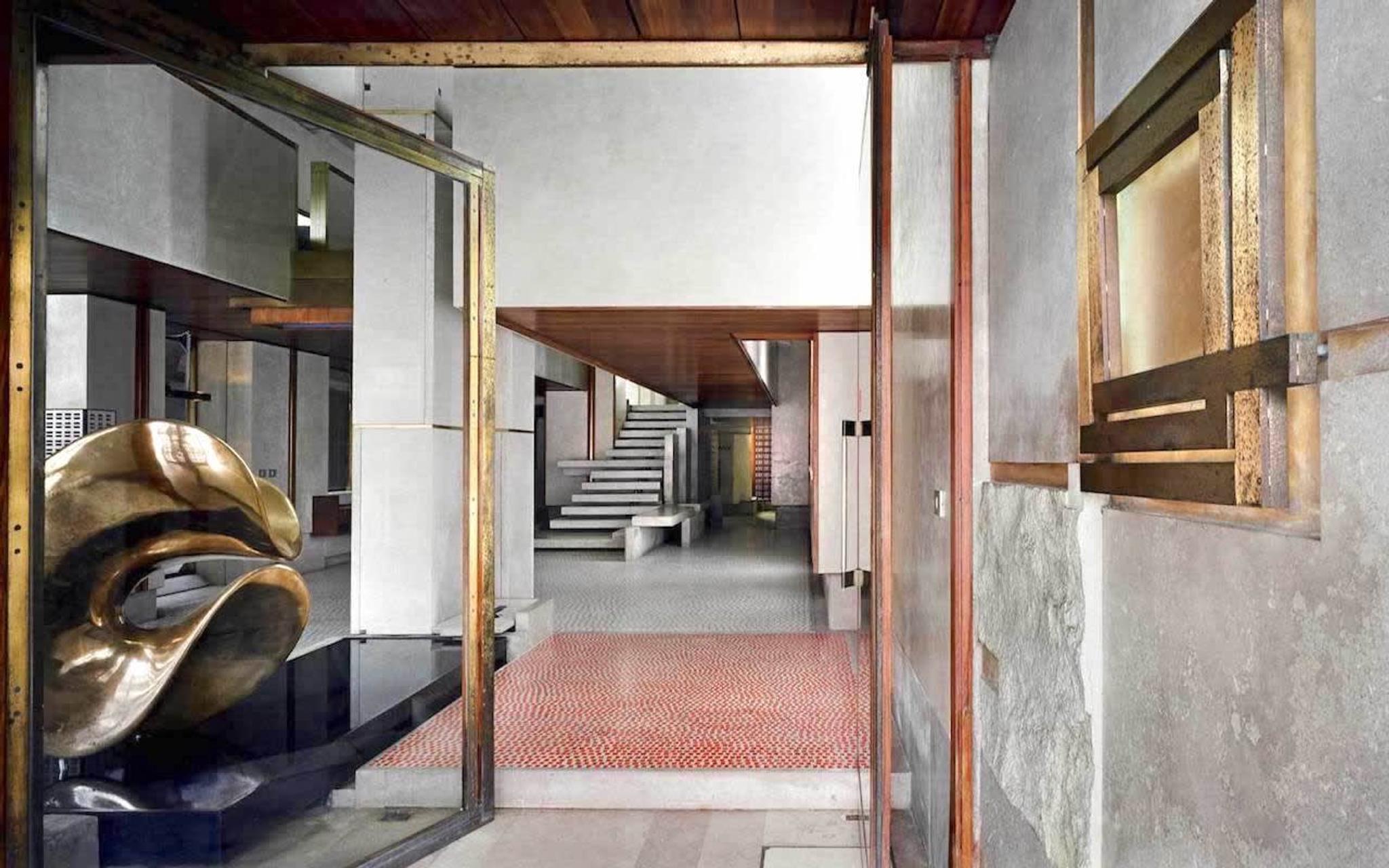
Venini
Battuto Bicolore Vase by Carlo Scarpa
3.100 EUR
Ships in 8-9 weeks

Discover the story of renowned designer Carlo Scarpa: from his years as a director of Venini Glassworks to his career as an architect and his controversies with the Italian associations that accused him of working without an actual degree. Explore how he led a generation of professionals and designers to new ventures in the post-war landscape, subverting the rules and disrupting the status quo, and browse through some of his iconic designs.

Carlo Scarpa was born in Venice in 1906, and spent the majority of his early childhood in the nearby city of Vicenza, where his family relocated, until he relocated back to Venice with his father and brother at age thirteen, after his mother's passing. Here, Scarpa progressed his studies at the Academy of Fine Arts, focusing on architecture and graduating with the title of Professor of Architecture, the title reserved to those graduates that didn't take the professional examination to officially become an architect. After graduating he started an apprenticeship with architect Francesco Rinaldo, where he met his future wife Nini Lazzari, the architect's niece.
The end of World War II marked the beginning of his professional career, but because Scarpa refused to sit the pro forma examination established by the Italian government, he never gained the formal title of Architect, and was not allowed to practice the discipline without effectively associating with an architect. This unusual circumstance was the first sign of his rebellious and offbeat personality, and gained him the nickname of "The Professor", used colloquially by his friends, family and even clients throughout his career.
His first exhibitions took place in 1932 at the Venice Biennale and, two years later, at the Milan Triennale.

Venini
3.100 EUR
Ships in 8-9 weeks

Venini
3.120 EUR
Ships in 8-9 weeks

Venini
14.645 EUR
Ships in 8-9 weeks

Venini
3.120 EUR
Ships in 8-9 weeks

Venini
8.015 EUR
Ships in 8-9 weeks

Venini
3.430 EUR
Ships in 8-9 weeks

In 1932, he was nominated art director of historic glasswork brand Venini, a national institution in the Venetian mouth blown tradition. Here, he developed his personal style and vision for product design, putting craftsmanship and details first and foremost, and later applying them in his architectural practice. With Venini, he was able to continuously experiment with different sculpting and artisanal techniques, and focused his world on the sole material of glass, and the specificity of the creative process of a single piece. A good part of his designs is still issued today by the brand, including historic pieces with outstanding techniques like textured "battuto" glass and the "incalmo" technique, an ancient method dating back to the 16th-17th centuries. His collections as an art director were showcased at a exhibition held at Rooms for Glass in 2012, giving a detailed retrospective of his avant-garde work.
The experience with Venini lasted until 1947, and further launched the brand to international attention, paving the way for collaborations with renowned design icons such as Alessandro Mendini, Gio Ponti and Ettore Sottsass, to name a few.
His architectural activity reflected these values of sensitivity and attention to detail, aware of the passing of time and detached from movements and trend, beign instead focused on the conservative restoration of existing structures. From the late 1940s, he was also a professor of Drawing and Interior Decoration at the Istituto Universitario di Architettura di Venezia.
Scarpa developped most of his projects in Venice and the Veneto region, as he was deeply bound to his homeland and to the craftmanship practices and artisanal tradition of Made In Italy. However, some of his designs of landscapes, gardens, and buildings can be found in other areas of Italy as well as the United States, Canada, France, Saudi Arabia, and Switzerland.
Some of his more famous renovation and restoration projects in Venice include: the Gallerie dell'Accademia, a museum gallery of pre-19th-century art founded in the 1700s; a number of remodeling interventions of Ca' Foscari, the world-famous Gothic palace of a noble Venetian family where he completely redesigned the great hall into a lecture hall; and the interior design of the Olivetti showroom, where he played with the existing art pieces of the Palazzo, integrating them with the manufacturer's pieces.
In 1978, while in Sendai, Japan Carlo Scarpa encountered a tragic death after falling down a flight of concrete stairs. Some of his architectural unfinished works were completed years later by his son Tobia, such as the Villa Palazzetto in Monselice, one of Scarpa's most ambitious landscape and garden projects, commissioned by the Cassina representative Aldo Businaro, the man who encouraged Scarpa's first trip to Japan.
During his long career, he was awarded numerous important awards including the Olivetti Prize, the IN / Arch Prize, the Gold Medal of the Ministry of Education for culture and art, and the Prize of the Presidency of the Republic for Architecture, marking his immense influence on the design and artistic landscape in Italy. He was a member of the Royal British Institute of Design, the Olympic Academy of Vicenza and the Accademia Nazionale di San Luca in Rome. His work was presented in Italy and abroad with solo exhibitions at the Museum of Modern Art in New York in 1966, the Venice Biennale in 1968, the Heinz Gallery in London, the Institut de l'Environnement in Paris, and finally in Barcelona in 1978.
Today, he is remembered not only for his many works in Veneto and all around the world, but for his unique style and approach to restoration, being able to combine and interpret existing structures with the utmost attention to details, doing to building what the craftsman does to his materials turning them into a single piece of incredible design.